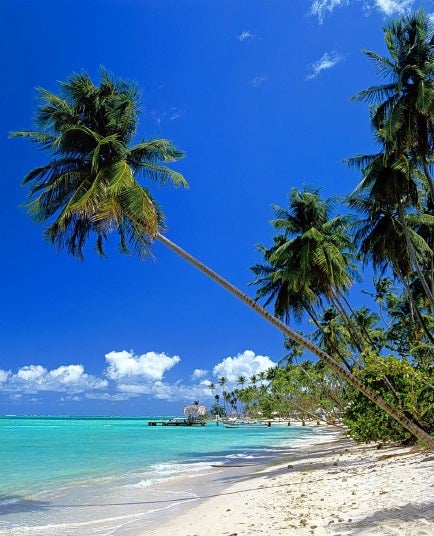Welcome to the island of two halves
If you’re a sun, sea and sand person, you won’t be disappointed ALAMY

Poolside people-watcher or wild adventurer? Tobago has something for everyone, writes Alexander McLeod
Caribbean islands come in all shapes and forms. Some are steep and forested, with limited elbow room for tourism. Others are flat and sandy, with a straightforward focus on sea and sun. Tobago has all of the above and more, but in two quite distinctive areas. Your views about what makes a good holiday may dictate where you stay.
Most visitors plump for what locals refer to as “the lowlands”. Most of the hotel accommodation, the population and the nightlife are situated on or near to the flat blade of land on the island’s southwest end, aka Crown Point. By its very nature – low lying and sandy – this region has the biggest quantity of easily accessible beaches. The hotel variety is much greater, as are the choices of restaurants and activities. This is where Pigeon Point beach, the island’s most famous stretch of sand, is located, with its wide choice of watersports.
This is also where key services such as the airport and the main town of Scarborough are found, as well as the island’s two golf clubs: one at Mount Irvine Bay and the other at Tobago Plantations Estate, part of the Magdalena Grand Beach and Golf Resort
But this is just a fifth of Tobago’s land mass. Beyond Scarborough the wilder country begins, and there is only really one way of accessing it: along a coastal road that throws a wobbly lassoo all around the island. Here, accommodation is small-scale and usually relatively simple, in villages where fishing and tourism is combined. Notable examples are Castara, where quirky guest houses climb up the hillsides like tree houses. The romantically secluded beach of Englishman’s Bay lies beyond it. Speyside, on the northeastern corner, has yet more beach, plus offshore islands and boat tours. And at Roxborough, once the island’s capital, there’s the road which snakes over the island’s spine, through the Main Ridge Forest Reserve.
So if you prefer bigger hotels with pools, people-watching, spas and fitness centres, you don’t need to venture far; equally, if you want to eat in a different restaurant every night, do some souvenir shopping, and soak up the sun, then stick with the lowlands.
However if you love birds, walks to waterfalls, giant silk cotton trees and interacting with fishermen, then head for the hills. But you may need to remember to do your own grocery shopping before you go.
Join our commenting forum
Join thought-provoking conversations, follow other Independent readers and see their replies
Comments
Bookmark popover
Removed from bookmarks